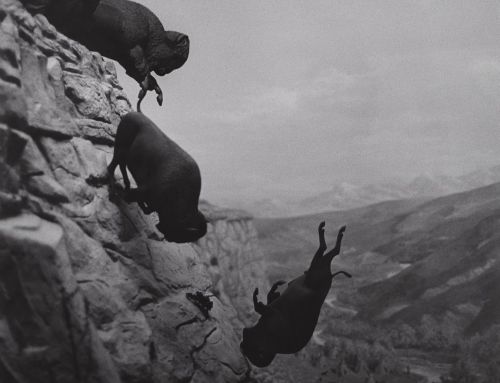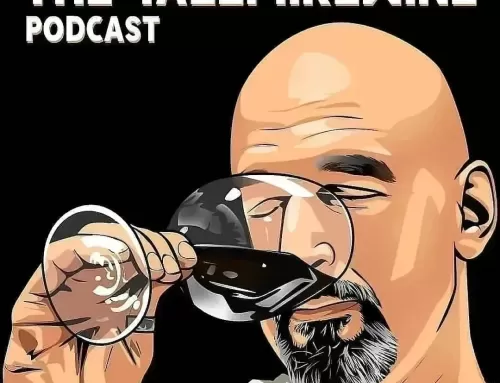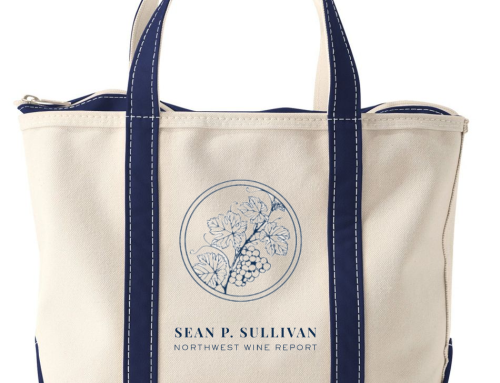In this month’s Five Wines Under $15, we take a look at Washington Pinot Gris with a cyber special 2:1 wine list. Read previous Five Under $15s here.
Scan the wine and grocery store shelves and you will find a good selection of Oregon Pinot Gris. You might be surprised then to hear that Washington makes more Pinot Gris than Oregon. In fact, Pinot Gris is Washington’s third most planted white grape at over 1,500 acres. The obvious question then is, where are all the wines?
Pinot Gris plantings have been on an astronomical rise in Washington in the last several years. According to the USDA, there were a mere 488 acres of Pinot Gris in Washington in 2006. By 2011, total plantings were 1,576 acres, meaning they have more than tripled in the last five years. No other grape in Washington has shown such a large percentage increase over this time. Nothing is even close.
As one would expect, production has increased dramatically as well. In 2006 Pinot Gris was fifth behind Chardonnay, Riesling, Sauvignon Blanc, and even Gewurztraminer. By 2010 it had vaulted to third with 6,100 tons produced.
Meanwhile, Oregon produced 5,312 tons of Pinot Gris in 2010 from 2,747 acres. That’s right, Washington is currently making more Pinot Gris than Oregon – one of the state’s mainstay grapes.
Does something seem strange about this picture? Where is all of that Washington Pinot Gris?
Let’s look for it.
Yakima Valley is home to more than half of the state’s plantings at 855 acres. Columbia Valley is second at 248 acres and Horse Heaven Hills third at 138. After that there are a smattering of plantings in the Columbia Gorge, Rattlesnake Hills, Lake Chelan, and (gulp) Puget Sound.
But where are the wines? Again, in 2010 Washington produced 6,100 tons of Pinot Gris. Assuming a conservative 50 cases of wine per ton of grapes, one would expect to see over 300,000 cases of Pinot Gris produced in Washington in 2010. Recent production numbers don’t look remotely close to this.
In 2009, the last year for which good data are available, major wineries account for less than 200,000 cases of Pinot Gris (see table at bottom of post). This would leave a gap of more than 100,000 cases.
Where is all of this Pinot Gris going?
There would seem to be two possibilities. The first is that a wave of Washington Pinot Gris is about to come our way. Given the large acreage increase in the last five years, many of these vines are just coming on line. If this is true, we can expect to see an increasing amount of Washington Pinot Gris on the shelves in the coming years. Still, this doesn’t account for what happened to the 6,100 tons of Pinot Gris in 2010.
A second possibility is that a large amount of Washington Pinot Gris is being blended into other varietal and non-varietally labeled white wines to stretch them out. The most likely candidate for varietal wines would be Chardonnay and then, perhaps, Sauvignon Blanc. At $765 per ton, Pinot Gris is considerably less expensive than Chardonnay ($899) and Sauvignon Blanc ($843) in Washington. Outside of comparably priced Semillon ($761), only the lowly Chenin Blanc at $688 per ton is less expensive in the state (NB: The only reason there is so much old vine Chenin Blanc in Washington is because it is used to stretch out other white wines).
It is also possible that Pinot Gris is making its way into large production, generic white blends. But what wines?
Regardless of where it’s all going and whether wineries are looking to stretch out their white wines or not, why would Washington vineyards be planting so much Pinot Gris in recent years?
Nationally, Pinot Gris is on the rise. The Wine Market Council recently noted that Pinot Gris consumption has increased steadily in the last five years with 39% of wine drinkers drinking the wine in 2010 up from 27% in 2006. According to Nielsen, Pinot Gris has had one of the largest volume increases in sales for white wines in the past year behind Riesling and Sauvignon Blanc. So there do appear to be reasons for planting the grape.
Is Pinot Gris poised to become a hallmark white wine for Washington? It doesn’t seem likely. While many of the wines reviewed below were enjoyable, none gave particular cause for excitement. Unlike other grapes that have been on the rise recently in Washington – think Malbec, Grenache, and Tempranillo – Pinot Gris’ ascent seems to be caused more by market dynamics than by high quality wines that have captured consumer or critical attention.
Is there a common thread to Washington Pinot Gris? Looking at releases from the 2009 and 2010 vintages below, it is difficult to say. Washington’s Pinot Gris are all light in color. Most are lightly aromatic with spice, straw, and apple notes, occasionally veering into a more tropical realm. The wines are medium to medium-plus bodied, separating them from many of their white wine peers. Most are 100% varietal and fermented and aged in stainless steel. But there the story ends, without something truly distinguishing or distinctive.
Ultimately, while Washington Pinot Gris is still in its early days, it’s hard to see why one would drink these wines over say Chardonnay (light to medium bodied, often with more acidity), Sauvignon Blanc (more acidity), or Riesling (more aromatic, more acidity, and considerably more diverse). Still, with all of this Pinot Gris planted, some Washington winemakers are sure to create wines that capture the imagination. Could a Pinot Gris gold rush follow? Only time will tell.
Columbia Crest Grand Estates Pinot Gris Columbia Valley 2010 $12
Rating: + (Good) Pale lemon yellow. Moderately aromatic with spice and pear. Palate is broad and medium bodied with a drawn out mouthfeel. Lingers on the finish. A pleasing, well made wine. 97.5% Pinot Gris, 2.5% Pinot Blanc. Fermented and aged in stainless steel. 13% alcohol. Recommended.
Dusted Valley Vintners Boomtown Pinot Gris Washington State 2010 $13
Rating: + (Good) Just the slightest tinge of color. A lightly aromatic wine with bananas and other tropical fruit and apple. The palate has a spritzy feel and is full of mango and banana flavors with a crisp finish. A very clean, enjoyable wine. 100% Pinot Gris. Evergreen Vineyard. Fermented and aged in stainless steel. 13.0% alcohol. Recommended. Reviewed November 18, 2011
Sockeye Pinot Grigio Columbia Valley 2010 $12
Rating: + (Good) Pale lemon yellow. Considerably more aromatic than the other wines sampled here with grass, lemon, hay, and bananas. The palate is medium bodied, full of banana flavors, with a rounded feel. 75% Pinot Gris, 16% Sauvignon Blanc, and 9% Roussanne. Canyon Ranch, Phil Church, A&R, and Willow Crest vineyards. 13.0% alcohol. 0.37% Residual Sugar. 1,542 cases produced. Recommended
Columbia Crest H3 Pinot Gris Horse Heaven Hills 2009 $15
Rating: + (Good) Pale lemon yellow. Very lightly aromatic with straw and a distinct aniseed note. Palate is medium bodied and broad with a textured feel, full of apple flavors with a spice filled finish. Despite the small percentage used, the oak plays a notable part in this show, broadening out the wine and contributing to spice flavors on the finish. 92% Pinot Gris, 8% Pinot Blanc. 92% fermented and aged in stainless steel. 8% fermented and aged in two-year-old American oak. 13.0% alcohol. 5,000 cases produced.
Chateau Ste Michelle Pinot Gris Columbia Valley 2009 $13
Rating: + (Good) Pale lemon yellow. A fairly aromatic wine with yellow apple, straw, and buttery spices. Palate is medium-plus bodied with an almost creamy feel accented by moderate acidity. 94% Pinot Gris, 6% Viognier. Fermented and aged in stainless steel. 13.5% alcohol.
Hogue Cellars Pinot Grigio Columbia Valley 2010 $11
Rating: + (Good) Pale lemon yellow. Very lightly aromatic with yellow apple, spice, and traces of tropical fruit. Palate is medium bodied with a broad feel. Appears to have just the slightest touch of Residual Sugar. A very enjoyable, well made wine. 50,000 cases produced. 13.4% alcohol.
Columbia Crest Two Vines Pinot Grigio Columbia Valley 2009 $8
Rating: ./+ (Decent/Good) Pale lemon yellow. Very lightly aromatic with yellow apple and spice notes. Palate is medium bodied and a bit more generous in texture than the other wines sampled here with a drawn out feel. Overall an enjoyable, easy drinker. 12.5% alcohol. 50,000 cases produced.
Waterbrook Winery Pinot Gris Columbia Valley 2010 $11
Rating: ./+ (Decent/Good) Considerably more aromatic than most of the wines sampled here with ripe yellow apple, pear, white grapefruit, and banana. The palate is tear dropped shaped, starting out broadly and then tapering off with abundant pear and floral notes. 100% Pinot Gris. 0.54% Residual Sugar. 12.3% alcohol. 2,000 cases produced.
Barnard Griffin Pinot Gris Columbia Valley 2009 $12
Rating: . (Decent) Very pale in color. Aromatically the wine has a distinct funk to it along with spice notes. The palate is medium bodied with a slightly tart finish. Caroway Vineyard (Columbia Valley), Gunkel Vineyard (Columbia Valley), and Freepons Vineyard (Yakima Valley). Fermented and aged in stainless steel. 12.01% alcohol. 0.2g/100ml Residual Sugar. 560 cases produced.
Columbia Winery Pinot Gris Columbia Valley 2009 $11
Rating: . (Decent) Pale lemon yellow. Very lightly aromatic with straw, spice, and apple. Shows some alcohol. Medium bodied, the wine comes off as somewhat short, tart, and bitter. On the low end of this section of the scale. 13.0% alcohol.
Table – 2009 Pinot Gris Production by Brand
|
Wine |
Cases |
|
Chateau Ste. Michelle Pinot Gris 2009 |
58,000 |
|
Columbia Crest Pinot Grigio Two Vines 2009 |
50,000 |
|
Hogue Pinot Grigio Columbia Valley 2009 |
31,200 |
|
Columbia Crest Grand Estates Pinot Grigio 2009 |
14,000 |
|
Columbia Crest H3 Pinot Gris 2009 |
5,000 |
|
Milbrandt Traditions Pinot Gris 2009 |
3,972 |
|
Mercer Pinot Gris Yakima Valley 2009 |
2,396 |
|
Waterbrook Pinot Gris Columbia Valley 2009 |
1,958 |
|
Dusted Valley Boomtown Pinot Gris Washington 2009 |
1,800 |
|
Ross Andrew Pinot Gris Columbia Gorge 2009 |
550 |
|
Hyatt Vineyards Pinot Gris Rattlesnake Hills 2009 |
814 |
|
Total Cases |
169, 690 |
NB: Columbia Winery made 8,376 cases of Pinot Gris in 2008. 2009 numbers were not available.
















A lot of the fruit could be destined for sparkling wine production.
Joel, very good point. I was wondering if that might be the case.
Thanks for a very interesting posting on this vinous conundrum. While nationally PG sales have indeed been booming the last few years, it's a tough market from the supply side. Most of it is sold as Pinot Grigio at $10/bottle and under. California and Italy are locked in a fierce battle for market share. California's supply from the efficient and low-cost Central Valley region comprises 2/3 of their acreage and is still growing. It is a critical variety for Italy's exports; so more price and shelf space wars and promotional spending can be expected. Meanwhile the Pinot Gris market over $10 is still nascent and Oregon has a substantial share and a headstart in establishing a reputation. If there is demand for Washington Pinot Gris as a blender, it may be a useful safety net. That's been the fate of a lot of California Syrah.
When I started drinking wine, I prefered Pinot Gris as my white wine of choice because it was very easy drinking and unoffensive. As my palate evolved, I began drinking the Chardonnays, Rieslings and Sauvignon Blancs because they were more multidimensional and varied much more from producer to producer. I still find this true today, where the Pinot Gris' that I taste from WA and OR are very simple, uniform, easy drinking and somewhat flavorless.
Occasionally I have found more complex, flavorful Pinots, with a good dose of acidity and even some sugar (the tried and true Riesling recipe). In my opinion, that's where Washington Winemakers need to go with Pinot Gris. Treat it more like a Riesling rather than a Sauvignon Blanc and you'll get much more aromatic and flavorful wines than the common Pinot swill that occupy store shelves today. I'm sure the wine reviewers won't like it (no offense Sean), but I think the consumers would appreciate it and it would definitely offer more variety than there is today. So Washginton Winemakers, give me a Pinot Gris with a bit more sugar and acid, dangit!
Anon, I'm actually in agreement with you in many respects. Most of the Washington Pinot Gris I sampled here were fairly one dimensional and not particularly aromatic or flavorful. Most were well made and reasonably enjoyable but were what I call JAW wines – Just Another White, innocuous and inoffensive. As I wrote above, I'm not sure why I would pick these wines above other whites.
A couple of my favorite Pinot Gris from Washington have come from Tranche Cellars and PB wines. These wines have been as you described – higher in acid with a bit of residual sugar. Would this recipe work for all? No, but it might produce some wines with a bit more diversity and interest than what we are currently seeing.
Come on now, that thing about the Chenin Blanc was a cheap shot. I sense some hostility. Show me the data.
Tedd, I didn't intend it as a cheap shot, merely as an observation. Personally, I love Chenin Blanc and am glad that it still has a toehold here. They are among the oldest vines we have in the state.
I learned that Chenin Blanc was being used for blending while researching an article on Chenin Blanc for Edible Seattle magazine. You can read the article here, although I omitted reference to this as a thought it distracted from the story: http://edibleseattle.com/july/august-2011/bright-juicy-fresh-delicious.htm.
As I'm sure you know, Chenin Blanc acreage has been decreasing in the state over the last several decades, from 600 in 1993 to 400 in 1999 to 207 in 2011. According to the USDA, 198 of the 207 remaining acres were planted prior to 1991, so most of what remains is fairly old by Washington standards.
Several vineyard managers I spoke with for that article (a number of whom are not referenced) talked about who was using these remaining grapes and for what purpose – mostly blending. Several winemakers confirmed this as well. However, none wanted to be quoted for a variety of reasons, and since it wasn’t the focus of my story, I didn’t have a problem with this. However, the anonymous quote I cut from the story was, “It’s very easy to make it (Chenin Blanc) disappear into (other white wines).”
Without a ‘smoking gun,’ sourced quote, let’s look at the circumstantial case based again on tonnage numbers. 1,100 tons were produced in 2009 (2010 was down drastically to 700 due to significant rot issues so it doesn’t provide a good example). Again, assuming 50 cases of wine per ton, we would expect to see a conservative 55,000 cases of Chenin Blanc out there. There is nowhere near this amount. Here is what 2009 looked like.
Wine, Production
Pacific Rim 2009, 4500 (approx)
L’Ecole 2009, 2500
Kiona 2009, 1,000 (approx)
Eliseo Silva LH 2009, 976
McKinley Springs 2008*, 546
Kiona Ice Wine 2009, 400
Hestia 2009, 450
Kyra 2009, 364
Tagaris LH 2009, 331
Cedergreen 2009, 328
Gorman Cry Baby LH 2009, 191
Teftt 2009, 66
Convergence Zone 2009, 48
TOTAL 11,200 cases
* 2009 numbers not available.
I’m sure there may be other producers out there but not large ones. The bottom line is that you don’t get anywhere near the expected number of cases.
Think about it this way. Chenin Blanc is the least expensive white grape in Washington at $688/ton in 2010. It is high in acid and can be cropped at a high tonnage without losing its acidity (one grower told me he found it easy to grow 8 tons per acre while still retaining flavor and acid). It therefore provides a perfect, low cost blending agent.
Personally, I have no issue with this, although I spent a whole lot of time trying to figure out where all the Chenin Blanc was going. However, if Chenin Blanc weren’t being used for blending, we’d have a whole lot less acres than we do now, and it most likely would have suffered the same fate as the other 400 acres that were removed.
Another missing Pinot Gris was Charles Smith Vino, rather nice at ten dollars.
Anon 9:52pm, thanks for the heads up. I'll keep an eye out for it.
I'll go out on a limb and say that Willow Crest makes the most consistently good pinot gris in the state. Better than many higher priced versions from Oregon. That said, none of them can compete with the best from Alsace, Alto Adige, or Friuli.
Pontin del Roza makes a solid chenin blanc. Damn…you'd think someone could make some amazing Savennieres-like chenin from some gnarly old Washington vines in the right vineyard.
Anon 12:32am, I looked in several spots for the Willow Crest PG but didn't find it unfortunately. I'll keep looking. I agree Washington PGs seem unlikely to give France or Italy a run for their money (or ours).
I'm looking forward to trying the Pontin del Roza Chenin. I've heard good things. Washington could, and should, make more kick ass Chenin Blanc with all of the old vines we have. For many years, L'Ecole has done its part to carry the Chenin banner. It's time for others to step up. It only takes one man – or woman – with a mission.
Did you stop and think about how much fruit/juice (especially pinot gris) doesn't get made into wine right off that bat but gets sold outright as juice to the "Wine Kit" manufacturers?
All the Wine Kit manufacturers are located in Canada (just a hop skip and a jump away from WA).
They are there because of the high sin taxes on alcohol (including wine) but not on grape juice. They sell most of it in Canada but lots of it as well to the home winemakers in the lower 48 (including myself).
WA State has fantastic fruit/juice at an excellent price point compared to anything coming out of Napa.
I would put my $$$ on the missing stuff being sold in a box on a store shelf as "kit wines" to the home winemakers Sean.
The thing that always puzzles me is that we see so much Pinot Gris coming out of Washington/Oregon, but so little Pinot Blanc. I think Pinot Blanc is much more intrinsically interesting, and, well handled, can make very beautiful wine. Like Pinot Gris, it can be pretty insipid if not handled correctly though.
Sean, it seems that your favorite wines were the most aromatic ones. That makes sense to me, since the wines themselves are relatively nondescript. I've noticed that you mention tropical/banana (or more accurately, ester) aromas in quite a few of the wines above. I'm pretty sure that doesn't come from the grapes directly, but is a byproduct of fermentation. A winemaker once told me that you can increase the aromatics of a white wine by keeping the fermentation cool, but if it was too cool, the aromas would turn all estery. I want to see what the grapes express in a finished wine, so when I taste a wine that has everything covered up with that heavy, generic tropical fruit thing, I consider it a flaw. I love a good aromatic wine, but I suspect it's a fine line to walk between getting the most aromatic content from the grape and letting the grape express it's own character.
ibglowin, interesting hypothesis! Will have to do some digging.
Dave E, I noticed as well that the wines that I preferred were a bit more aromatic than the others. However, these wines also brought more fruit expression on the palate as well better balance. Some of the wines were very, very lightly aromatic. If tasting these wines they had a bit more of a hook to hang a hat on – flavor, texture, acid, balance, etc, I would have found this less of an issue. Many though just seemed a bit like generic white wine with a bit more body and a bit less acid and little in the way of aromatics.
In terms of the tropical/banana notes, some grapes can definitely produce a good deal of tropical aromas and flavors. As long as the wine is in balance, I have no issue with this, especially if these notes are typical for the varietal.
Jeez Sean, STOP in Prosser sometime! Willow Crest and Pontin del Roza make some of the best varietals you are writing about in the state…
They are NOT that hard to find, the big blue signs on the interstate point you to both.
Chris, looked for the Willow Crest bottle here in town and didn't see it unfortunately. Didn't know Pontin del Roza makes one as well though. Sounds like a trip is in order!
I will add that I thought the Columbia Crest H3 improved after a day of being open and based on this I would recommend it.